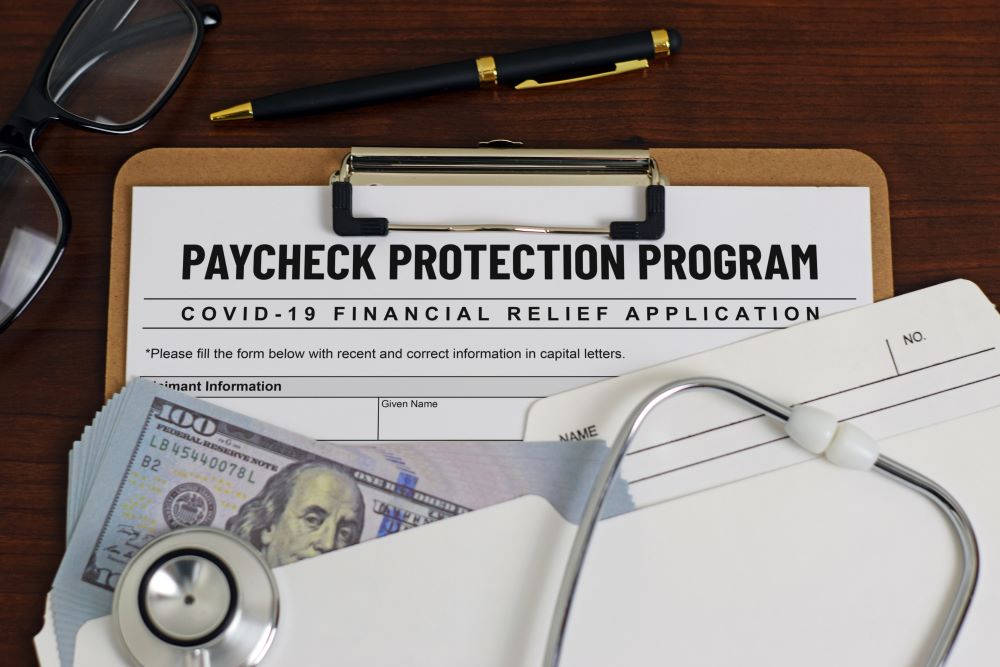SBA Issues New PPP EZ Loan Forgiveness Application

On June 17, 2020, the Small Business Administration (SBA) issued a new Paycheck Protection Program (PPP) loan application guidance. Also, there is now a new short loan forgiveness application, Form 3580 EZ, which is designed especially for self-employed and other qualifying borrowers. The latest updates were necessary to comply with the changes implemented by the PPP Flexibility Act of 2020. Key changes include updated guidance on the extended covered period, new expense ratio adjusted from 75% to 60% for eligible payroll costs, owner-employee compensation limit for the extended covered period, and a new borrower demographic form. The forgiveness application is significantly shorter than the prior version, and instructions are now provided in a separate document.
This update is welcome news for borrowers initiating the loan forgiveness process. Below is a summary of key information on the EZ application.
Qualification Criteria for Form 3580 EZ
While less complicated than the full application, not every borrower automatically qualifies to use the application. To qualify, one of the following criteria must be satisfied.
- The borrower is a self-employed individual, independent contractor, or sole proprietor without employees at the time of PPP application and did not include employee salaries in determining the average monthly payroll.
- The borrower did not reduce annual salaries or wages of any employee by more than 25% during the covered period as compared to the period between January 1, 2020, and March 31, 2020. Also, the borrower did not reduce the number of employees or average paid hours between January 1, 2020, and the end of the Covered Period.
- The borrower did not reduce the annual salary or hourly wages of any employee by more than 25% during the covered period or the Alternate Payroll Covered Period compared to the period between January 1, 2020, and March 31, 2020. In addition, the borrower must not have been operating at the same level of business before February 15, 2020, due to COVID-19 guidelines.
Calculating Total Eligible Payroll Costs
The applicant is required to calculate the total eligible payroll costs from the Covered Period.
This is determined by totaling cash compensation, benefits, and related taxes paid.
- Cash Compensation – This is the sum of gross salary, gross wages, gross tips, gross commissions, paid leave, and allowances for separation pay. For each employee, the total amount of cash compensation allowed for forgiveness cannot exceed an annual salary of $100,000 prorated for the Covered Period. Note that for an 8-week Covered Period, the total is $15,385, and for the 24-week, the total is $46,154.
- Employee Benefits – This includes the total amount paid for employer contributions to health insurance, including contributions to a self-insured, employer-sponsored health plan. Do not include employer health insurance contributions made on behalf of a self-employed individual, general partner, or owner-employees of an S-corporation.
- Retirement Benefits – This includes employer contributions to retirement plans, excluding employee contributions. Do not include employer retirement contributions made on behalf of a self-employed individual, general partner, or owner-employees of an S-corporation.
- Employer Taxes – This consists of the employer portion of state and local income taxes related to compensation.
Steps for Calculating the Forgiveness Amount
The new application aligns with prior guidance on costs eligible for forgiveness with one important change. Borrowers are now required to spend only 60% of loan funds on payroll costs creating more room for payment of other qualified expenses. According to application instructions, the following costs are eligible for forgiveness.
- Payroll Costs – Borrowers are typically eligible for the payroll costs paid and incurred during the relevant Covered Period. Payroll costs are considered paid on the day paychecks are distributed, or an ACH transaction is initiated. Costs incurred but not paid during the last pay period of the Covered Period can be forgiven if paid on or before the next scheduled payroll date. For each employee, the total amount of compensation eligible for forgiveness may not exceed an annual salary of $100,000.
- Nonpayroll Costs – This includes covered mortgage obligations such as interest on any business mortgages, rent or lease, and utility payments, including electricity, gas, water, telephone, and transportation. It is important to note that utility service, rental agreements or mortgages must have been in place before February 15, 2020, to be eligible. Nonpayroll costs cannot exceed 40% of the total forgiveness amount.
Documentation Requirements
The application also requires the submission of specific documentation to support calculations made in determining the forgiveness amount.
- Payroll – This includes documentation verifying cash compensation and non-cash benefit payments. Items such as bank statements and payroll reports documenting the amount of compensation paid to employees are required.
- Tax Forms –Examples of acceptable documentation include payroll tax filings, state quarterly business, and individual wage reporting and unemployment insurance tax filings.
- Payment Receipts – This documentation can consist of payment receipts, canceled checks, or account statements documenting the number of contributions to employee health insurance or retirement plans incurred.
- Nonpayroll – Copy of lender amortization schedules and receipts or canceled checks, copy of current lease agreement, and copies of invoices for business utility payments.
Contact Us
The new EZ loan forgiveness application and guidance make it easier for borrowers to use loan funds to maintain eligibility for loan forgiveness. Take advantage of these changes to put your business in the best position possible. If you have questions about the information outlined above or need assistance with PPP loan forgiveness, Klatzkin can help. For additional information, click here to contact us. We look forward to speaking with you soon.
The above represents our best understanding and interpretation of the material covered as of the date of this post. Things are moving at a rapid pace, and as such, information is subject to change. This information is provided for informational purposes only and is not intended to be a substitute for obtaining accounting, tax, or financial advice from an accountant.
